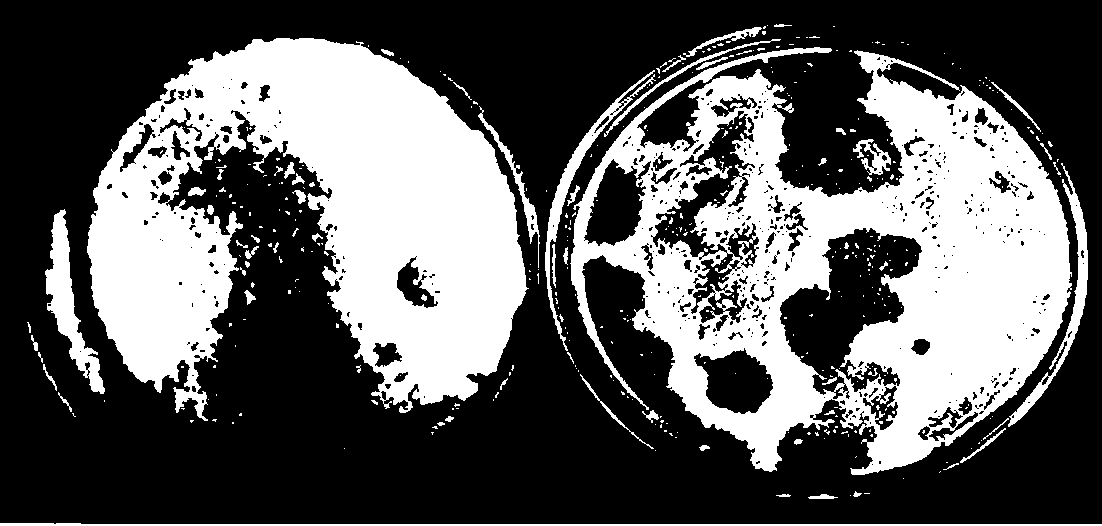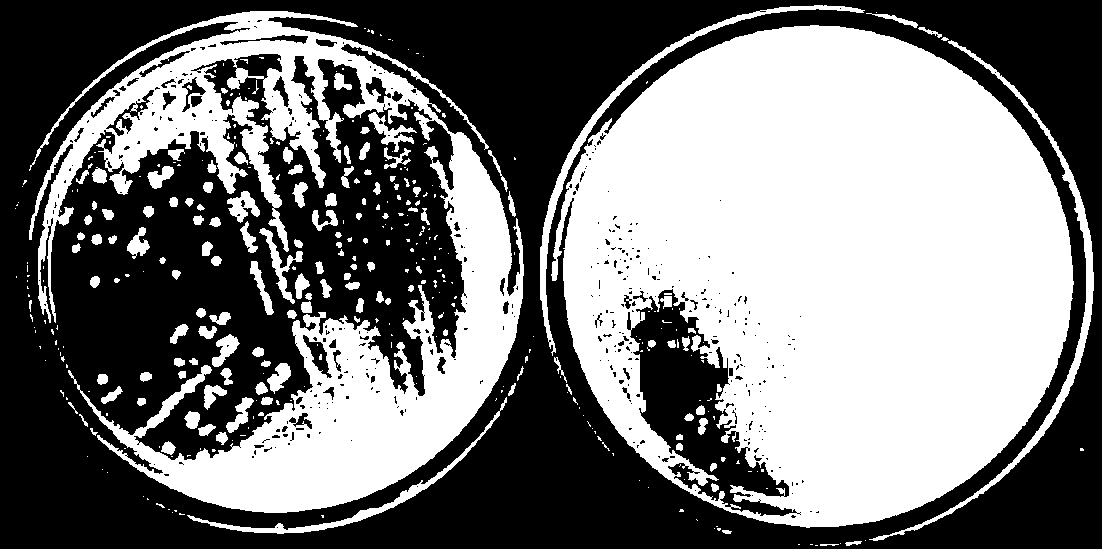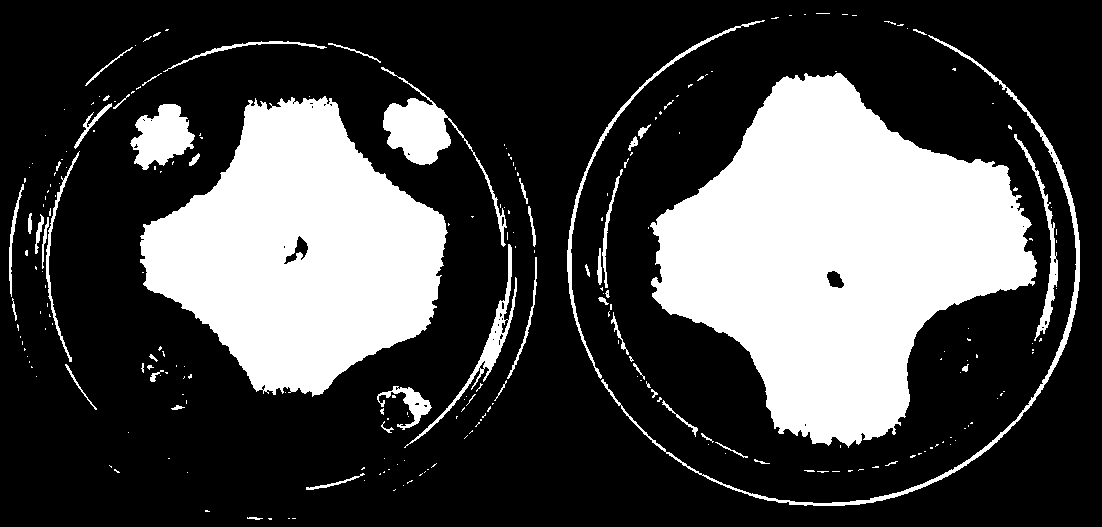Method of fast and efficiently screening antagonistic bacteria from compost
A technology of bacteria and composting, applied in the field of agricultural biotechnology and biological control, can solve the problems of accelerating the development and application of antagonistic bacteria, heavy workload of antagonistic bacteria, and reducing screening workload, so as to speed up development and utilization, shorten screening time, The effect of reducing workload
- Summary
- Abstract
- Description
- Claims
- Application Information
AI Technical Summary
Problems solved by technology
Method used
Image
Examples
Embodiment 1
[0033] Example 1, Primary Screening of Antagonistic Bacteria in Vinegar Grains Compost
[0034] (1) Prepare solid potato glucose medium (potato 200 g / L, glucose 20 g / L, agar 20 g / L).
[0035] (2) Weigh 10 g of vinegar lees compost, add it into a 500 ml Erlenmeyer flask filled with 90 ml of sterile water, shake it fully, place the Erlenmeyer flask in a shaker at 37°C at 200 r / min, and shake the flask for 30 min .
[0036] (3) Use a pipette gun to draw 5ml of the vinegar lees suspension prepared in the above steps and add it to a 150ml triangular flask containing 45ml of sterile water to make 10 -2 compost suspension, mix well. Then prepare 10 in turn -3 , 10 -4 , 10 -5 , 10 -6series of compost dilutions.
[0037] ( 4) Use a pipette gun to draw 100 μl of the above series of compost dilutions, drop them on the potato dextrose agar medium, and then spread them evenly with a coating stick.
[0038] (5) After the plate of potato dextrose agar medium coated with compost su...
Embodiment 2
[0040] Embodiment 2, the purification of target bacterium
[0041] After the potato dextrose agar plate described in Example 1 was grown in the incubator for 7 days, the mycelium of a large amount of Fusarium oxysporum cucumber-specific pathogenic bacteria was overgrown on the plate, and at 10 -5 and 10 -6 Obvious inhibition zone can be seen on the plate (see figure 1 ). Use an inoculation loop to pick the bacteria in different inhibition zones and mark them on the solid yeast extract-peptone medium (yeast extract 5 g / l, peptone 10 g / l, sodium chloride 10 g / l). Cultivate in an incubator at 30°C for one day. After a single colony grows on the yeast extract-peptone medium, observe the shape of the colonies in each plate, and purify the impure strains by streaking. until the bacterial colonies in each Petri dish have the same shape, size and color (see figure 2 ). Finally, a total of 34 purified bacterial single colonies were picked.
Embodiment 3
[0042] Embodiment 3, re-screening of antagonistic bacteria
[0043] Pick the target bacterium that 34 strains screened out in embodiment 2 are cultivated in solid yeast extract peptone with a toothpick, inoculate in the liquid medium containing 50 ml yeast extract peptone (yeast extract 5 g / l, peptone 10 g / l, Sodium chloride 10 g / l) in a 150 ml Erlenmeyer flask, shake at 30 °C and 200 r / min to logarithmic phase. In the center of the potato dextrose agar medium plate, transfer the Fusarium oxysporum specialized type strains of cucumber punched with a hole puncher (diameter 5 cm), around the place about 2.5 cm away from the central pathogenic bacteria (four points equidistant), and respectively spot 0.5 μl of the bacterial solution in the above logarithmic phase. Cultivate in an incubator at 30°C for about 7 days. By observing the presence or absence of the inhibition zone, a total of 8 antagonistic bacteria were screened, and the antagonistic effect of some antagonistic bac...
PUM
 Login to View More
Login to View More Abstract
Description
Claims
Application Information
 Login to View More
Login to View More - R&D
- Intellectual Property
- Life Sciences
- Materials
- Tech Scout
- Unparalleled Data Quality
- Higher Quality Content
- 60% Fewer Hallucinations
Browse by: Latest US Patents, China's latest patents, Technical Efficacy Thesaurus, Application Domain, Technology Topic, Popular Technical Reports.
© 2025 PatSnap. All rights reserved.Legal|Privacy policy|Modern Slavery Act Transparency Statement|Sitemap|About US| Contact US: help@patsnap.com



